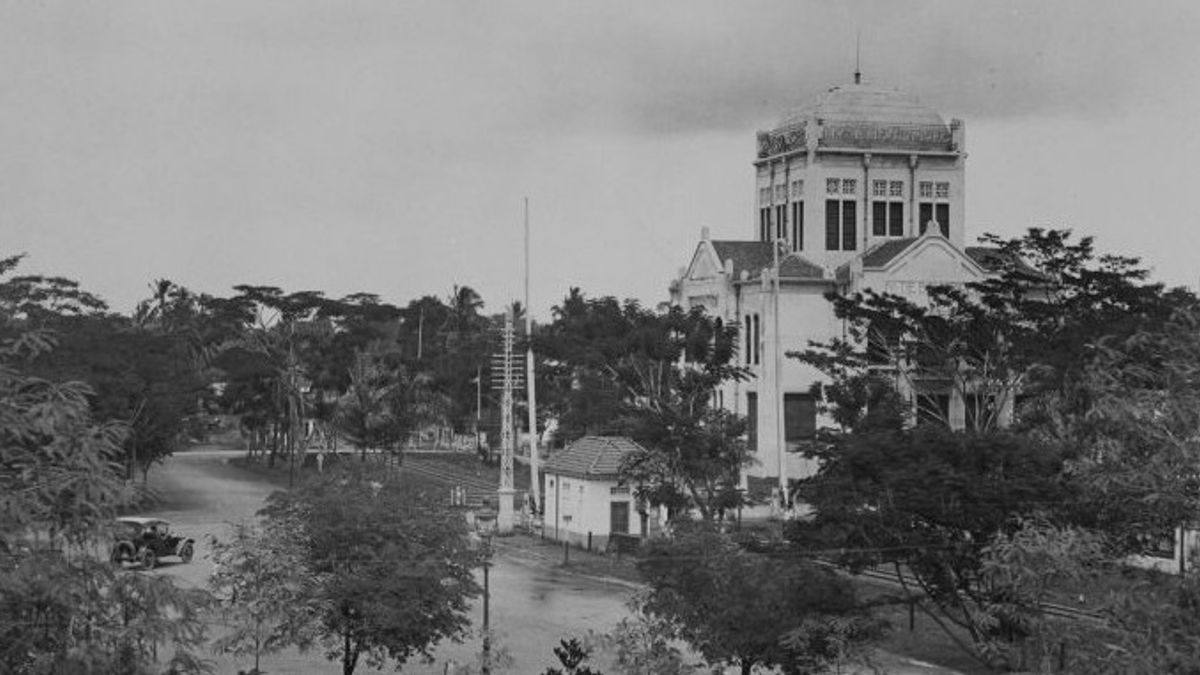JAKARTA - Turkey suddenly changed the status of the Hagia Sophia building in Istanbul from a museum to a mosque. Despite being a polemic, it has become a decision by Turkish President Recep Tayyip Erdogan.
At a glance, there are similarities between the Hagia Sophia in Istanbul, Turkey and the Boplo Building in Jakarta, Indonesia. Apart from both changing their function to become a mosque, in fact the two buildings have been recorded as having changed their status many times throughout history.
It is possible that the Hagia Sophia on the world map was built and famous first, while the Boplo Building is only known to a small number of Indonesians and is still relatively young. However, at least the two buildings have become evidence that a historical building can be adapted for different functions.
Hagia Sophia for example. Historically, the Hagia Sophia has indeed been recorded as an important place of worship for Orthodox Christians for centuries, until Istanbul - which later became known as Constantinople - fell to the Ottoman Turks in 1453. Since then, the Hagia Sophia was built into a mosque.
Then, after the establishment of the Republic of Turkey under Mustafa Kemal Ataturk, the status of the Hagia Sophia was changed to a museum in 1934. The status lasted until the day Erdogan announced the decision to return the Hagia Sophia to a mosque and only changed the plenary on Friday, July 10.
Likewise the Boplo Building - an acronym for Bouwploeg - which was built in 1912. In the past, this building from 1912-1925 was used as an office building by NV Bouwploeg. Thereafter the building was used by Proviciale Waterstaat (public works committee) and as an auxiliary post office.
It was only after Japan began to colonize Indonesia (1942-1945) that Japan made this office as a naval headquarters during World War II. Afterwards, this building was used by the Staatssporweg (railway service), various housing agencies (1957-1964). Has also been the secretariat office of the DPRD-GR and MPRS (1964-1970) and the office of religious affairs.
Later, when the Boplo Building began to function as a mosque in 1985, the Boplo Building later became the Cut Meutia Mosque. As a result, Cut Meutia Mosque is famous as the identity of Menteng as the City of Parks.
Uniquely, to this day, the image of the elite area carried by Menteng is maintained as the Cut Meutia Mosque is maintained. Menteng is so special that this area has become a popular residence for diplomats, ministers and presidents.
The origins of the Boewploeg BuildingTalking about the Boplo Building would be somewhat incomplete if it did not include a famous architect who was also the master plan maker of the Menteng area, Pieter Adriaan Jacobus Moojen. In Moojen's hands, many buildings of high artistic value were born. One of the buildings he worked on and became the first building in Menteng was the Boplo Building in 1912.
As revealed by Sorta Tobing in his writing in Tempo Magazine entitled Seabad Nieuw-Gondangdia (2012), the Bouwploeg Building which means contractor in Dutch, functions the same as a marketing office today. "Moojen designed it in the art Nouveau style, which was popular in Europe at that time."
"A large mass is in the middle. The smaller squares were attached to the right and left of the mass. From above, it looks like a symmetrical cross. The entrance looks as if there are three, but one. The other two serve only as openings. At the top, he wears a dome. Not round, but rather square like the dome of the Medan Grand Mosque. Large windows were attached all over the walls. The room in the middle of the building is very large with high ceilings, ”said Sorta while describing the building.

Interestingly, Moojen's design looks different from other building design styles in Batavia (Jakarta). No wonder, through his masterpiece, Moojen is like an artist who dares to explore in a classic style combined with wide buildings with large pillars. For this reason, the Grand Master of Dutch architecture, HP Berlage, who had visited Indonesia in 1923, praised Moojen's work.
Because, from the outside alone, the Boplo Building was considered not an office building because it was more like a building for cultural purposes, thanks to its rather bold design. Only when you go inside, the former workspaces with high ceilings that bring light in through large windows become another uniqueness.
"This is important for the architects who work in it. The high living room guarantees good air circulation: from the window through the office space hot air can go up and out through the windows under the roof dome, "said Adolf Heuken SJ and Grace Pamungkas in the book Menteng: The First Garden City in Indonesia (2001). .
Adolf, who is known as an important figure in the writing of Jakarta history and also a resident of Menteng since the late 1960s, stated that the top of the arched windows in the Boplo Building appears to be filled with beautiful stained glass. “The arc or arch is supported by pilasters. stained glass can also be seen at the main entrance, which was changed since the building was used as a mosque in 1985. "
The charm of the Boplo Building is not even just about the building. quoted from Alwi Shahab in the book Maria Van Engels: Men-in-law Habib Kwitang (2006), emphasizing the adherence of the Boplo Building in the memory of Europeans (Dutch) in the pre-independence era, also due to the presence of a monument commemorating the success of General Joannes Benedictus van Heutz in conquering Aceh.

At the monument that extends near Menteng Raya and Cikini Raya roads. It appears, the monument is given a pedestal as the place for the statue of Van Heutz, which seems to be constantly radiating goodness. Uniquely, the Company believed that the monument was a concrete manifestation of their efforts to unite the archipelago.
"However, the nationalists saw this statue as an insult to the honor of the people and made their hearts rebel. After Indonesia's independence, this statue was mercilessly destroyed to the ground, ”concluded Alwi Shahab.
The English, Chinese, Japanese, Arabic, and French versions are automatically generated by the AI. So there may still be inaccuracies in translating, please always see Indonesian as our main language. (system supported by DigitalSiber.id)













